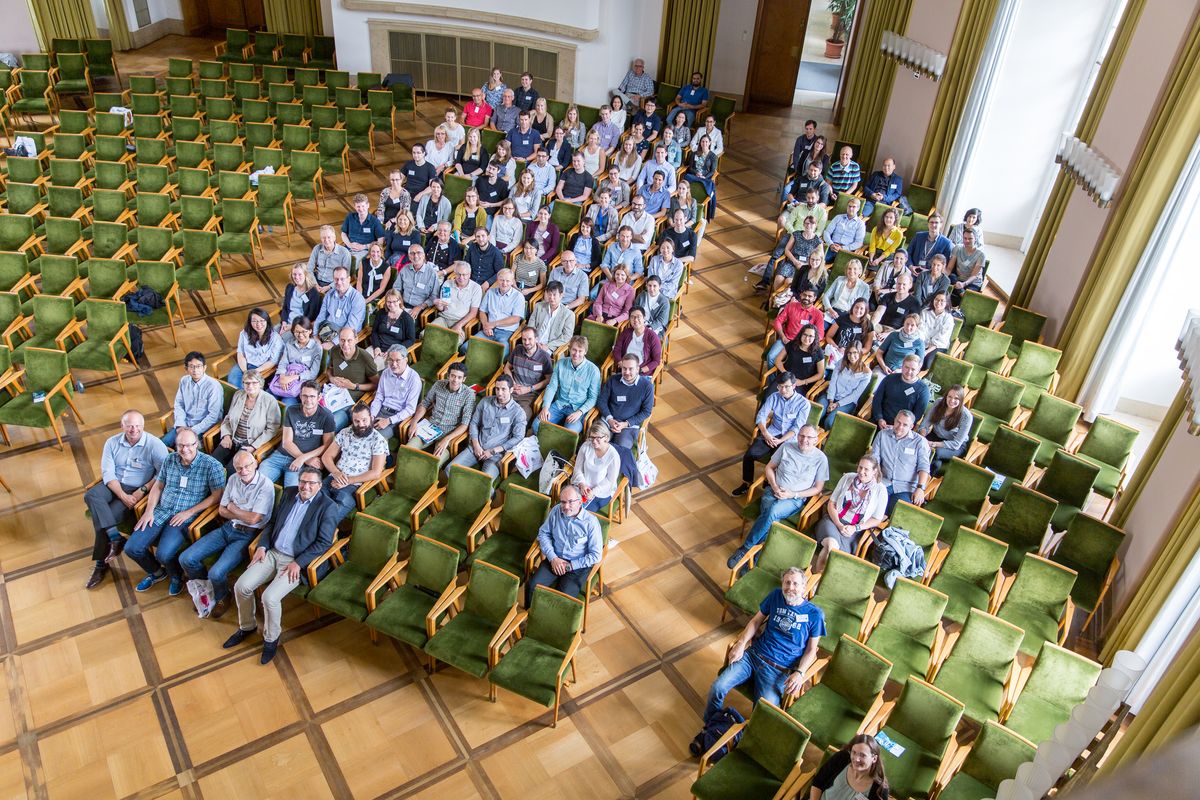
As the past severe influenza season 2017-2018 has shown, influenza still remains a permanent concern for public health and cause high economic loss world-wide. To better control these outbreaks and to develop novel antivirals and vaccines, a deep understanding of viral mechanisms, host-pathogen interactions and immunological pathways is mandatory.
It was the aim of the 6th International Influenza Meeting to bring together experts from all over the world to discuss and exchange the most recent research results in molecular virology of influenza viruses and to create new collaborations.
The meeting took place in the historic building of Muenster Castle, the head building of the University of Muenster and was opened by Stephan Ludwig (Muenster, Germany), the coordinator of the research network FluResearchNet. About 200 researchers from 23 countries participated in the 6th International Influenza Meeting. This year, Japan was chosen as a partner country of the conference, introduced by a video welcome address of Akira Terano, chancellor of the Dokkyo University, a major partner university of WWU Münster.
The first lecture was given by a Japanese colleague, Takeshi Noda (Kyoto, Japan), who talked about the „Packaging of segmented genome in influenza virus“ and impressively demonstrated the benefits of ultrastructural vizualisation for influenza virus research. His findings highlighted the importance of the assembly of eight influenza RNPs into a specific "1+7" configuration for genome packaging in progeny virions and suggested a potential role for cellular RNAs in viral genome packaging.
„Vizualising flu“ was the highlight topic of the 6th International Influenza Meeting and accordingly John Briggs (Cambrigde, United Kingdom), who was talking about „Enveloped viruses revealed by cyro-electron tomography“, provided another inspiring talk in the field of ultrastructural analysis of influenza viruses. Among other findings the data presented opened novel insights into the roles played by individual viral proteins in influenza virus assembly.
The Keynote by Martin Schwemmle (Freiburg, Germany) opened the session „Evolution and Emerging Viruses“. In his presentation he provided his latest research findings on the biology of novel and unusual influenza viruses from bats.
The session „Vaccines & Antivirals“ started with a keynote lecture entitled „Cytotoxic T lymphocytes to influenza virus: Cat and mouse“ by Guus Rimmelzwaan, who recently moved from Rotterdam to Hanover, Germany. He was talking about the role that cytotoxic T cells and their memory function could play in the influenza prophylaxis.
The meeting`s last keynote was given by Wendy Barclay (London, United Kingdom). She talked about „The interplay between influenza polymerase and the host“. She gave an overview on this exiting topic and also presented her recent findings that species-specific differences in the host cell protein ANP32A accounts for the suboptimal function of avian virus polymerase in mammalian cells. She thereby introduced ANP32A as an essential host partner co-opted to support influenza virus replication and proposed that ANP32A may be a candidate host target for novel antivirals.
In addition to the keynote lectures, researchers presented their most recent results in selected oral presentations, covering a wide range of aspects from molecular mechanisms of replication to virus-host interactions and immune responses.
The sessions were accompanied by poster presentations - about 70 scientists presented their work.
We are looking forward to the 7th International Influenza Meeting on September 27 - 29, 2020.
Some impressions of the 6th International Influenza Meeting
